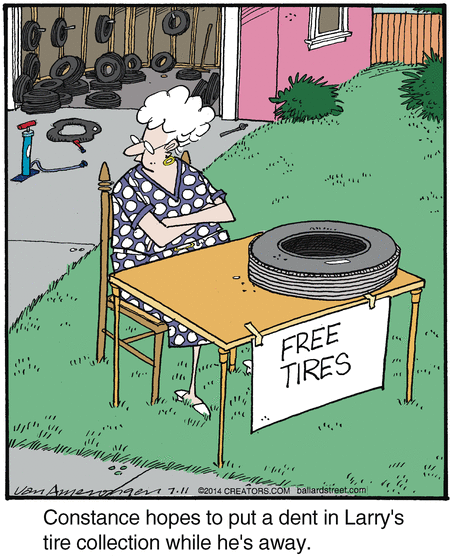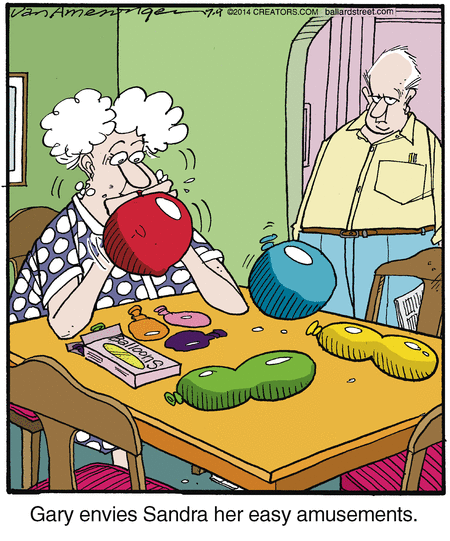233 6 Steps To Create Delighted Customers By Protecting Them From Themselves (Without Becoming A Dung Slinger)
Podcast: Play in new window | Download ()
Subscribe: Apple Podcasts | Spotify | RSS | More
There’s a strong, but perhaps subtle difference between a customer and a client. A customer buys one time. A client is a repeat customer.
Loyalty programs are designed to convert customers into clients. They don’t always work, but we can applaud companies for trying I guess.
Ideally, what we all want are what Ken Blanchard called “raving fans” in 1993. Up to that point, those of us who were fanatical about the customer experience were working hard to get people to talk about us. And as Jeffrey Gitomer has pointed out for years, we rather enjoyed having the power to control what customers said about us: something good, nothing or something bad. Mostly, customers said nothing. Because “average” best described most customers’ experiences…so there wasn’t much to say. It was the two extremes that businesses typically had to manage. The hacked off customer had to be soothed lest we get bad publicity. The delighted customer merely had to be thanked for heaping on us such high praise.
Creating sales funnels wasn’t nearly as fun as creating sales cycles. The funnel meant you had to keep feeding the top of the hopper. I never found that terribly rewarding, even when it was necessary. A cycle on the other hand goes round and round, and when it’s done well, it can become powerful because the centrifugal force can generate not just sales, but clients. That whole step of taking a prospect to a buyer can really be accelerated when somebody has become a raving fan telling somebody else to do business with us (or “you’re crazy”). It’s kind of like getting a free pass in Monopoly where you get to quickly advance ahead. Raving fans help you advance ahead and jump the curve to creating more happy customers.
You can battle the competition til the cows come home…and I’m a big fan of kicking the competition in the teeth. But I don’t want the cows coming to my home. I just want to nail the competition to the wall as fast as I can while I make sure I watch my blindside lest I get knocked out. Like a skilled MMA fighter, you’ve got to know how to attack and how to defend. Sometimes a great counter move can provide a terrific offensive opportunity by properly defending yourself.
But there’s a problem with some customers — maybe MOST customers! There are predators lurking to take your customers. It may be a direct competitor. Somebody who does the same thing you do, or something very close. It may be an indirect competitor. Somebody who is vying for the dollars of your customers robbing them of the chance to hire or buy from you. Those competitors are worth thinking about. They’re also worth strategizing against, but they’re not the predators I’m talking about. Often times, they’re not the number 1 predator you’ve got to worry about.
You have to protect your customers from themselves. I’m going to give you 6 steps to create delighted customers by protecting them from themselves.
1. Know Your Stuff
My sales career begin in the Stone Age when every salesperson was told, “Product knowledge is king.” We mostly believed it until we learned the hard way that it wasn’t true. Some crafty, low-life, lying piece of beetle dung could outsell those of us who really knew our stuff. That caused some to join the ranks of the dung slingers, but those of us who had a conscience couldn’t do that. Instead, we had to learn that it was important to know our stuff. We needed to know more about our products than the customers. How much more depended on the customer. Some were very knowledgeable and that meant we had to step up our game. Most had a much lower, or mere casual knowledge so it was easy to dazzle them.
Knowing your stuff is important for the obvious reasons, but also for the less obvious. Yes, it’s impossible to provide great solutions when you don’t have a high awareness of their differences, benefits, features and downsides. Just as importantly – maybe more so – you need to know your stuff so you can engage customers with confidence, knowing that you can help them. Some people – the best con men – are able to summons up confidence no matter what. They can flip a switch and go into high confidence mode in a flash. The rest of us have to amp up toward it. Being prepared is major ingredient in doing that. And it’s also the right way to do it if you care one whit about your integrity.
2. Be Friendly
Duh. I know, you’d think this would be a given, but there are tons of people who haven’t a clue about how to be friendly. Or they think they’re friendly, even though nobody else thinks so.
There’s a population of sales people, marketing people and others who are so steeped in knowing their stuff, they think that’s the trump card. And perhaps it could be except they’re so pompous nobody can stand being around them. These are the hyper-pros who raise their chin in the air looking down on the rest of us because they know more than we do. And even if they do, they won’t outsell those of us who know how to be friendly.
Friendly begins with a disposition. It’s an inner smile on your face that morphs into a physical smile on your face. It’s that look that says, “I’m glad to see you.” You know the look. It’s the one your dog gives you when you come home.
I don’t know why more salespeople don’t try that. It works.
Your dog isn’t being fake or phony. He’s really, genuinely glad to see you. The key for you is to exhibit that same genuine “glad to see you” attitude toward your customers.
A dog that approaches you with a wagging tail is sure to get your attention in the form of a pat on the head, a pet of the back or the ultimate prize…the belly rub.
By being genuinely friendly, salespeople can not only make the sale, but gain a customer who may become a client. The friendlier you can be the more delighted you can make your customer because part of friendliness is being helpful, genuine and sincere.
In the movie Ruthless People actor Judge Reinhold is a stereo salesman (naturally, all of us old stereo salespeople could relate to his character). In one obscene scene (pardon the language, please), he shows a pimply faced kid a pair of massive loudspeakers. The friendly banter between the salesperson and the kid make the kid instantly like Reinhold’s character. Then the kid’s pregnant wife or girlfriend walks into the sound room, “the big room.” Instantly, Reinhold’s character switches gears and takes the kid to a much smaller, but more affordable option. Why? Because he knew it was the right thing to do. That’s a big part of being friendly. Doing the right thing.
3. Listen Well
I’ve known salespeople who bragged how they knew what they were going to sell somebody before they ever walked in the door, or before they ever called. They wore it like a badge of honor and skill. Yep, those kind of people are still alive and kicking so you have to be on guard. From million dollar technology solutions to professional services to low end consumer goods the world is still full of unscrupulous people who have no idea what your problems are, and frankly, don’t care. They just know what they’ve got to sell you, and they’re going to aim everything they do to funnel you into their pipeline. Don’t be that guy!
Instead, pay close attention to your customer. Listen not just for the words, but for the emotions. You need to hear the fear or excitement. You need to sense the worry and pain.
Call some customer service hotline if you’ve not done that in a long time. It doesn’t matter who it is. How about your cable TV provider? Or your Internet provider? Or your cell service provider? Pick one of those and call them. You have a 100% chance of hearing a scripted agent attempt to triage your problem. You’ve got a 50/50 chance of getting somebody who can actually hear and understand your problem. People aren’t trained to listen. They’re trained to go through a scripted series of questions, quickly figure out if they can help you, then pass you along to somebody else who may be able to manage you better.
Delighted customers are generated when we listen to them and when they know it. Let’s call it empathy because that’s what it is. You can’t just listen with your ears. You’ve got to use your heart, too. It should make sense, too – because your heart is where you feel delighted. So you’re going to have to use your heart to deliver it.
4. Ask Great Questions
The quality of your questions determines the quality of your business. That’s true when you’re crafting a strategy. It’s also true when you’re talking with a customer or a prospect.
Great questions help you distill the real issues the customer is experiencing. People are always talking about finding out where people have pain. Well, sometimes people don’t know that exactly. Right now, my left shoulder blade hurts, but only by going to the doctor repeatedly and having multiple tests run am I able to know the reason for that pain is because my lower neck has a slight bulging disc. The remedy for the pain has nothing to do with working on my shoulder blade. It took more probing to find the real source of my pain.
So it is with your customers. They may not be able to articulate their problem. Or they may have a convoluted issue like I’ve got with my shoulder blade. Questions – great questions – can help you hone in on how to best help serve them.
But great questions also do something just as important. They tell your customer that you care and you’re interested. A guy goes out on a first date with a girl and all he does is talk about himself. The date ends and she goes back to her apartment reporting to her friends that, “He didn’t ask anything about me!” That date may have gone far better if the guy had show genuine interest in her and asked her questions showing her how interested he was in learning about her. Your customers feel the same way.
Jump straight to the solution and you may as well scream, “I don’t really care about you. I just want you to buy from me.” Will that work? Sure, sometimes. But you’ll never delight a customer by doing that. Instead, take the time to craft and ask great questions that will help guide you to become a better solution provider for your customers. Don’t short cut the process.
5. Confidently Provide Solutions
By now you’ve established genuine trust. You’ve got rapport with the customer. They like you. You’ve listened to them and asked great questions. Now you’re ready to present some solutions. Solutions are plural. Don’t go to the solution you intended to sell all along, before you ever got to know them. Now it not the time to mess things up.
Maybe you’ve got multiple solutions based on pricing. The choices could be based on color, features, longevity or anything else. Whatever the difference are, be prepared to point those out. This is where knowing your stuff keeps paying off.
Not long ago I suggested to a neighbor who wanted to record some video presentations with narrations to buy an Audio-Technica ATR2100 or AT2005 microphone. These are roughly $50 USB/XLR microphones that sound terrific, mostly because they’re dynamic and not condenser like all the other USB mics. She saw my studio, but I told her my studio was put together 8 years ago or so. Things have changed drastically. My gear is still among the best hardware out there, but it’s just not necessary…even for me. Now, I’m not selling her anything, but by showing her the differences and telling her what she needed to accomplish her task, I could help her make a smart decision.
6. Protect Customers From Themselves (And Other Predators)
You want to help your customers make a smart choice for themselves. It’s their money. Don’t pigeonhole them into the choice you want. But make sure you work hard to protect them from themselves. That’s where confidence comes in.
A customer talking with a custom cabinet maker about the various kinds of wood. The customer, hoping to save some money, asks about an inferior kind of wood because they’re intent on some specific high-end hardware. The experienced cabinet maker pushes back. He insists they go with higher quality wood because he knows the difference it’ll make in the finished product. He shows them an alternative to the hardware they’ve selected that looks almost identical to the hardware they selected, but it’s significantly less expensive. He shows them the differences, including the warranty (the less expensive hardware has a better warranty). Turns out the more expensive hardware is a brand that advertises extensively in all the major home improvement and style magazines. The less expensive is a generic “knock off” that he likens to generic drugs. He’s used both for years and assures the customer they’ll not be able to tell the difference in the hardware, but they’d most certainly notice the difference in the quality of the wood. Knowing how customers in the past have wrestled with such decisions, the cabinet maker (a well seasoned craftsman) seizes a moment to drive his point home as he protects the customers from their own desire to save money in an area he knows will make them unhappy in the long run. “I won’t do this job for you with that wood because I know you’ll be very unhappy with the result. This is a major investment you’re making and you deserve to have cabinets that you’ll be happy with years from now when you open a door or pull open a drawer.”
His drive wasn’t to over sell the customer on something more expensive. He found a way to keep them close to their budget by giving them a superior quality product. As he explained to them, “I’ve been in business over 20 years. I’m not going to let you make this mistake because you’ll complain to everybody who ever visits your home.” Well, that’s pretty dramatic. But that’s what happens when you’ve got the confidence necessary to save customers from their own bad choices.
“We’re going to get some other bids,” say the prospective cabinet buyers.
“I completely understand,” says the experienced craftsman. “I don’t blame you one bit. But I do want to warn you of a few things you should look for. Lots of people cut corners to reduce costs and drive down prices. I’m all for helping my customers save money, but like I told you about the hardware. You can see for yourself that the less expensive stuff I showed you is every bit as high quality as the name brand. Of course, if saying you have that brand is important – and it is for some people – then I’d tell you to go with the name stuff.”
He goes on to show them some critical things to look for as they continue to shop. By doing that, they’re now fearful of his competition. Will the next guy be as forthcoming as this guy has been? And we’re really going to have to be on our toes and ask lots of questions because this guy taught us an awful lot about cabinets that we didn’t know before.
The old cabinet maker has just put a pretty good hedge around his prospects. He did it by being honest, confident and knowing his stuff. He left their house without an order, but the very next morning the husband called him and said, “Thank you for coming to see us yesterday. My wife and I thought about it and slept on it. We decided there wasn’t any point in talking with somebody else. We don’t want anybody else doing this for us. We’re ready to hire you.”
Another delighted customer protected from themselves and the dung slingers.





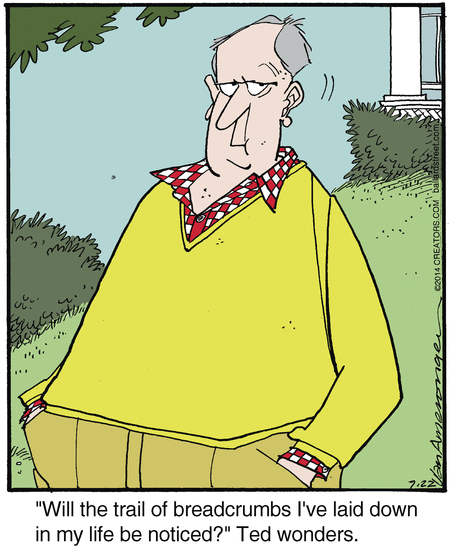

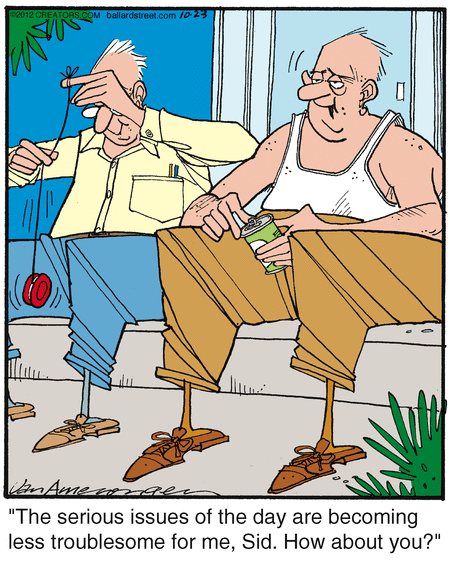


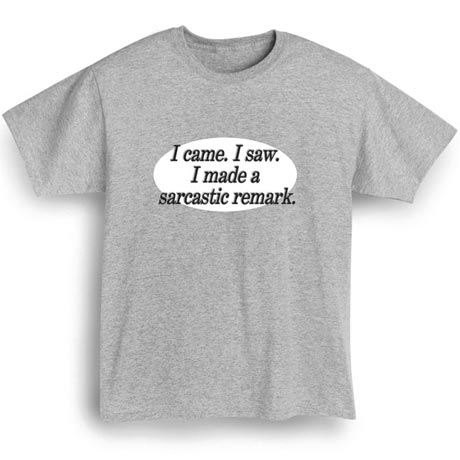
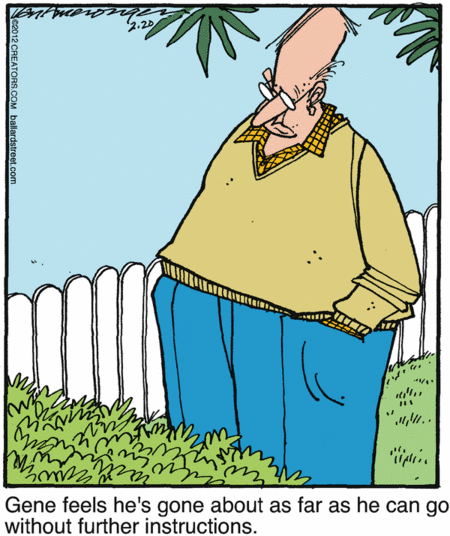
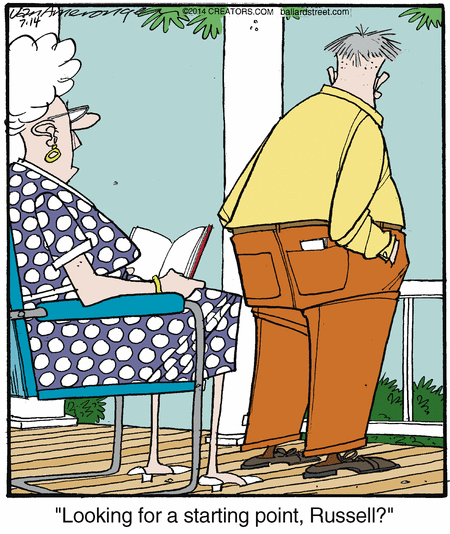


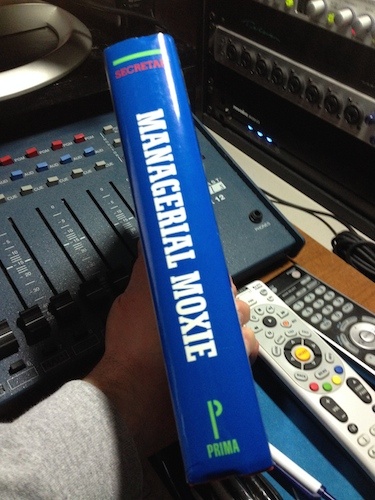

 3. What name properly conveys the subject? What name could I select that would resonate best while giving me enough latitude to keep the topic going over the long haul?
3. What name properly conveys the subject? What name could I select that would resonate best while giving me enough latitude to keep the topic going over the long haul?